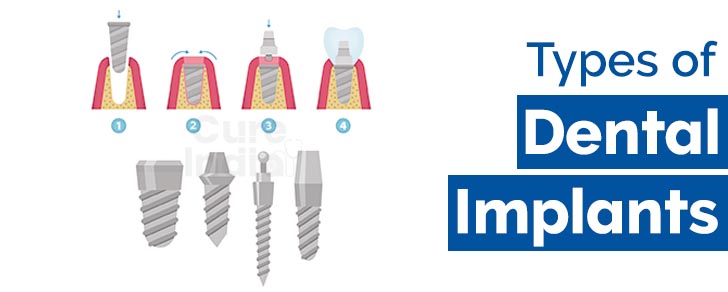
Dental implants are categorised based on their application area and the specific regions of the jaw where they are installed. Thus, the primary factors that dictate these classifications—whether the implants are placed in the jawbone or cheekbone—and the condition of the patient's bone structure. With over 200 companies offering various implant types, dentists have a lot of leeway when deciding which one to use in which part of the jaw. Now, let us go through these kinds in greater detail;
Types of Dental Implants by Their Implementation Area;
Implants are categorised in 3 different groups according to where they are placed: in the jaw bone (Endosteal dental implants), above the bone (Subperiosteal Implants), and in the cheek bone (Zygoma Implants). Furthermore, there are more intricate implant techniques known as transosteal implants, which are positioned beneath the jawbone that offer enhanced stability to dentures.
1- Endosteal Dental Implants
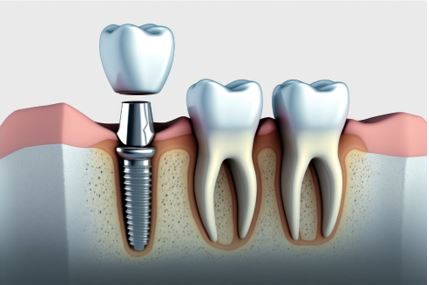
In the market, endosteal dental implants are the most common type of implant. These were developed in the 1960s by Swedish professor Per-Ingvar Brånemark. Brånemark made the significant observation that titanium exhibits remarkable biocompatibility with bone tissue, thereby facilitating the insertion of implants into the bone with remarkable efficacy.
Endosteal implants are tiny titanium screws that are carefully placed into the jawbone, serving as a sturdy foundation for dental prostheses. The remarkable growth of the leading implant brands in the market is clearly evident, as they have experienced a surge of interest in implantology following this discovery. The following are the different categorizations of endosteal implants:
a. Screw-Type (Threaded) Implants:
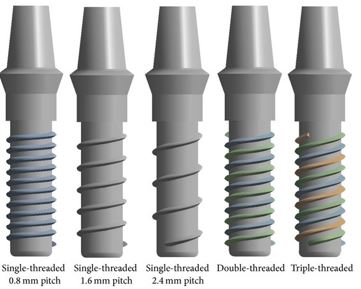
Of all endosteal implant types, these are by far the most common. These implants have a screw-like shape and are directly inserted into the jawbone. The presence of threads facilitates enhanced osseointegration and stability by promoting increased surface contact between the bone and the implant.
b. Cylinder-Type (Smooth) Implants:
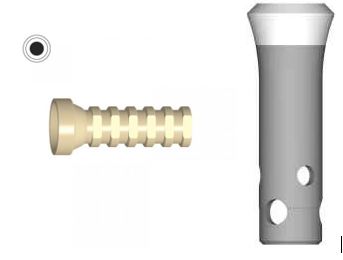
These implants are sleek, cylindrical rods that are inserted into the jawbone. Unlike screw-type, these rely on the surrounding bone for support rather than threads. In a scientific research on cylindrical implants conducted in 2022 at a health institution in India, 30 patients were assigned tapered implants while another 30 patients were assigned cylindrical implants.
The study's findings suggest that cylindrical implants may not be as stable when placed, but they do stabilise early on thanks to a blood clot. Since these implants occupy less space, bone can grow faster around them, reducing the risk of bone necrosis after surgery. The study also found that cylinder implants are less stable and more painful compared to tepered implants.
c. Blade-Type Implants:
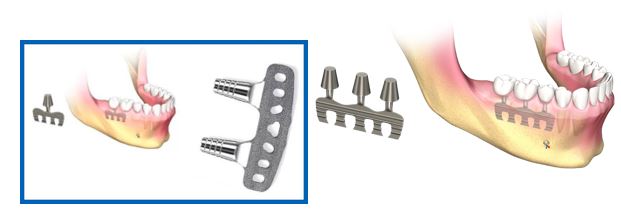
These are flat and rectangular in shape. Blade-type implants are placed into the jawbone when the bone is too narrow for cylinder or screw-type implants. They provide a broader surface area to support the artificial teeth. Blade-type implants are particularly suitable for specific clinical situations such as placement in thin alveolar bones.
Blade implants can avoid the need for certain bone grafting procedures by utilising their unique shape for better anchorage in certain bone types. The blade should slip easily into the prepared channel, but not more than 1-2 mm below the crest of the ridge. If the channel has been curved to follow the dental arch, the blade must be bent to fit passively.
2- Subperiosteal Implants
Dental implants called subperiosteal prostheses are suitable for patients with insufficiently elevated jawbones. These implants are different from the conventional ones because they are placed above the gum line rather than into the jawbone. It takes the shape of a metal framework that is custom-made for each patient's jaw; once the gums have healed, the patient's teeth are fastened to the framework.
It has some drawbacks in comparison to conventional implants, including increased instability and an elevated risk of infection, despite being a viable option for patients with significant bone loss. Nevertheless, various subperiosteal implant options can be considered for each patient's specific condition.
3- Zygoma Implants
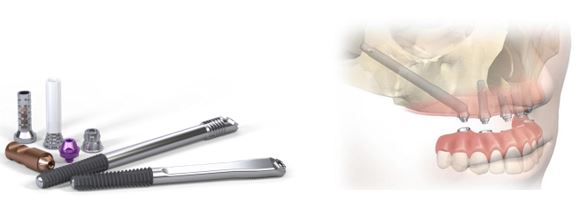
Zygoma implants are specifically designed for patients with inadequate bone structure to support traditional dental implants. It is particularly recommended for patients who have experienced significant resorption or loss of the maxilla. The zygomatic bones of the face are the typical locations for zygoma implants. In turn, this allows the implants to provide deeper and more stable fixation, making the prosthesis more reliable. Zygoma Implants achieved an 88% success rate in a scientific study involving patients ranging in age from 41 to 83 years, with the majority of participants being female.
Types of Dental Implants by Implementation
Dental implants can be used either as individual supports for a single tooth or as multiple applications through the use of bridges. Another popular method for full mouth restorations is implant-retained dentures. These are fastened to the gums and teeth by means of a bar that is placed on sturdy implants. Let us delve deeper into these methods.
1- Single implants
Single implants are dental implants designed to replace a single missing tooth. With these implants, sophisticated imaging methods like CBCT are used to measure the bone quantity and density in the region. If the affected area is deficient in bone, a bone graft may be necessary to restore the appropriate degree of bone hardness. Once this process is completed, the optimal distance for a successful single implant is 1.5 mm from neighboring teeth.
2- Implant supported bridges, Multiple Implants

Implant-supported bridges are made from titanium implants that are placed in a single or multiple locations of missing teeth. Bridges are a well-established method of treatment that has been extensively studied in the scientific community. In a 2021 study of 1673 dental implants, it was found that 3-unit fixed dental prostheses (FDPs) caused more bone loss after one year compared to single implant-supported crowns.
FDPs, on the other hand, were associated with a reduced incidence of peri-implant complications and technical issues. These findings emphasise the significance of closely monitoring the bone and periodontal health surrounding implant-supported fixed dental prostheses (FDPs).
3- Implant-retained dentures
Implant retained dentures are prostheses attached to these implants via fixed implants. These treatments' most popular methods are below.
a. All-on-Four:
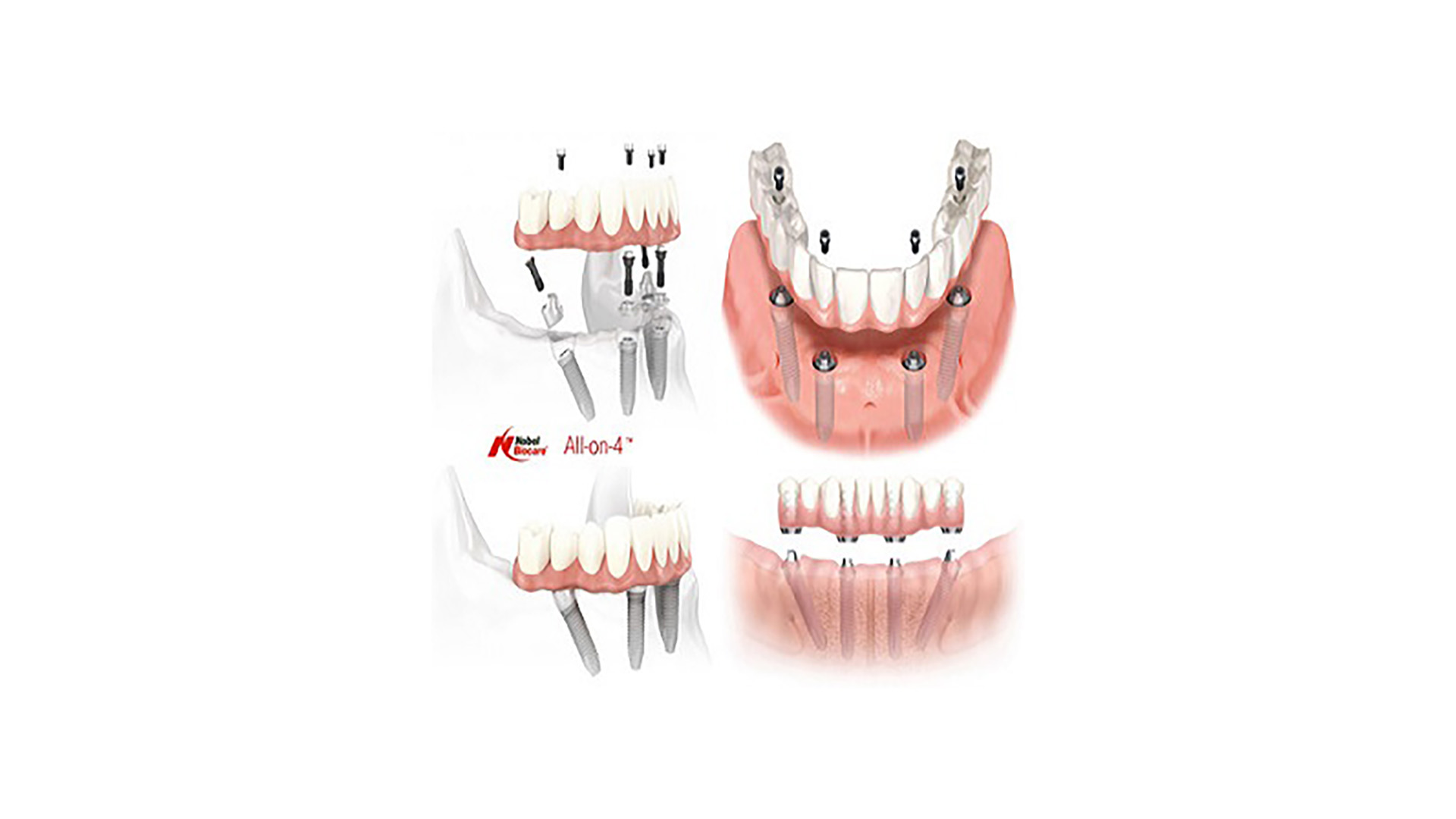
In this technique, four implants are strategically placed in the patient's jaw, with two of them angled to maximise stability. These specialised implants are longer than standard ones, measuring around 15-16mm. While the All-onFour technique may have certain drawbacks when compared to the All-on-Six technique, it is worth noting that it involves less surgical intervention due to its application on the stronger jaw bones. This enables the performance of All on Four in just one day, resulting in a significantly shorter recovery period following treatment.
b. All-on-Six:
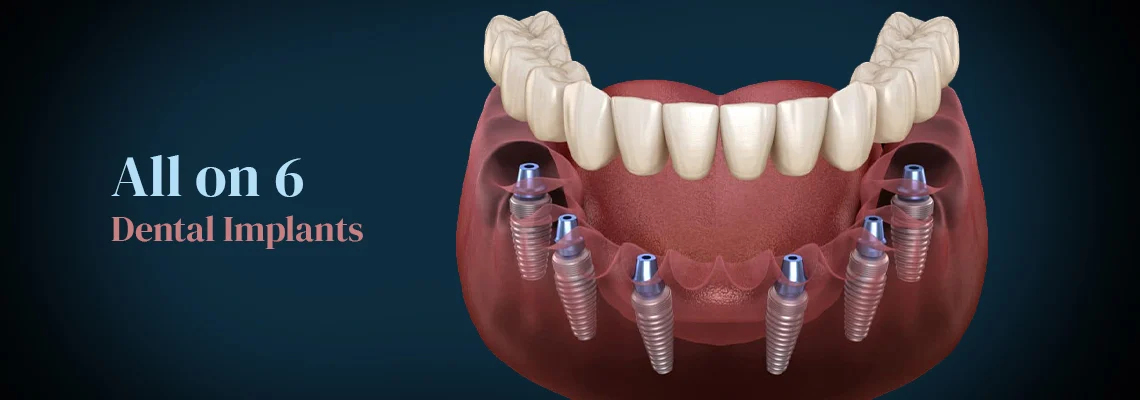
The All on Six technique involves the placement of six implants onto the jawbone. This technique involves the utilisation of conventional implants that are tailored to match the patient's specific bone structure. For the All on Six method, it is necessary for the patient to have adequate bone density in the posterior regions where the implants are placed. The increased density of implant placement in All on Six results in a more natural look and a more robust barrier to issues like food jamming.
c. Implant Supported Full Dentures:
Complete dentures are used to replace all teeth and are based on implants fixed to the jawbone. A complete denture, also referred to as a full denture, false teeth, or plate, is a removable device used to replace all teeth in a jaw that have been lost and require prosthetic replacement. Once all the teeth in an arch are gone, the dentist will make a full denture. This is different from a partial denture because it is only attached to the gums.
At Antlara Dental, we prioritize the use of world-leading brands for our dental implants, ensuring that each selection is meticulously made to meet the unique needs of our patients. Dental implants require precise execution and an unfaltering commitment to quality at every stage of treatment. Factors such as accurate pre-treatment measurements, proper execution of necessary orthodontic treatments, thorough cleaning of the area post-treatment, and stringent sterilization protocols are critical to the success of the implant procedures.
We invite you to benefit from the expertise of our seasoned dental professionals, who bring 20 to 30 years of experience in implantology, ensuring the highest standards of care at Antlara Dental.
